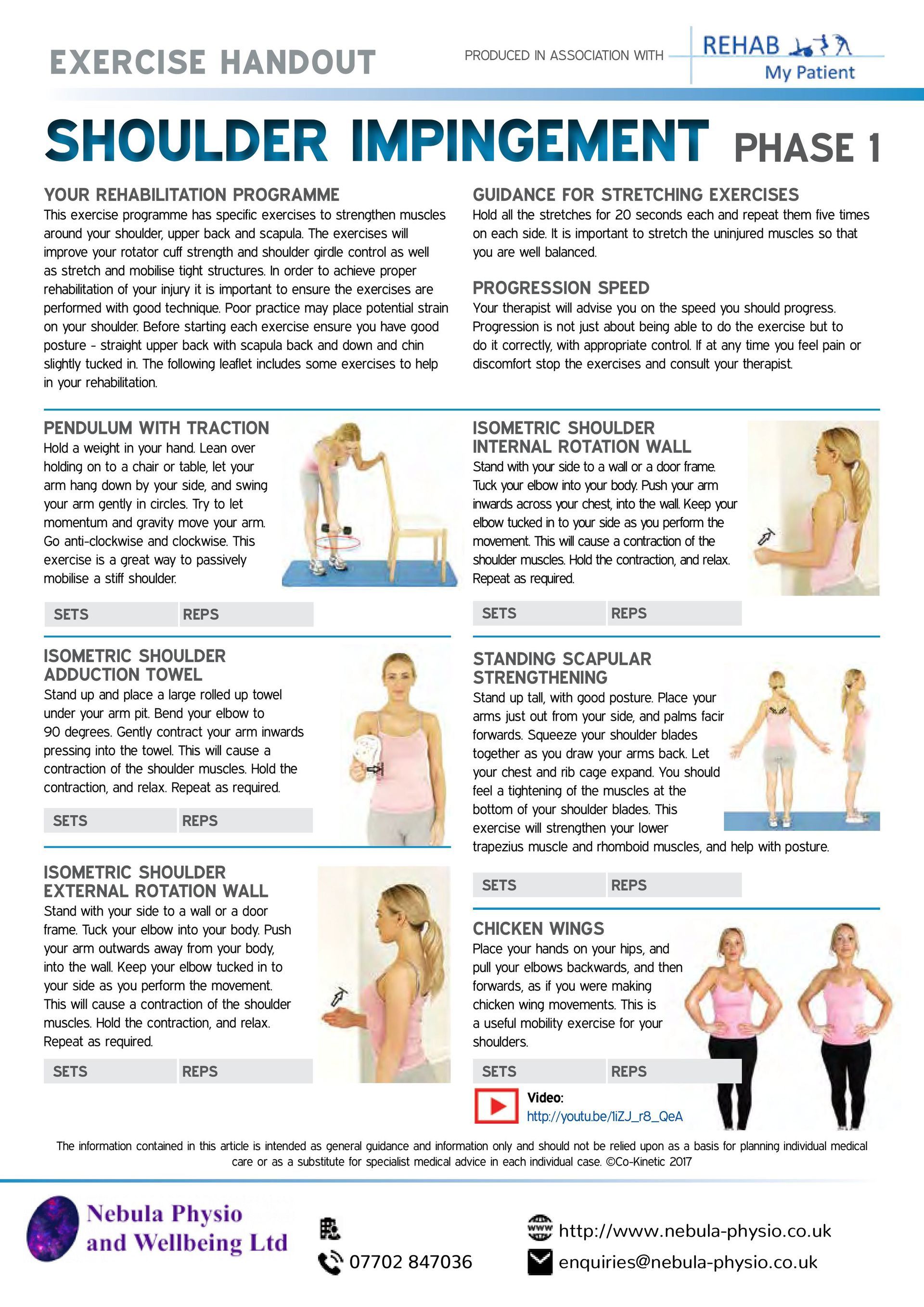Shoulder Impingement Exercises Phase 1
As mentioned in our “shoulder impingement” blog, the shoulder joint has got a huge range of motion. The way the body holds the arm and shoulder together whilst moving, is through the muscles and ligaments. There are muscles surrounding the shoulder joint from all sides which makes it look like they are forming a ‘cuff’, hence the name rotator cuff muscles. The rotator cuff muscles appear to be vulnerable to tendon damage or degeneration (wear and tear). Of all the rotator cuff muscles this particularly affects the supraspinatus tendon which can be found in the top of the shoulder. Unfortunately, this is more likely as we get older and have more rounded shoulders.
For more information on the causes, symptoms and treatment options for shoulder impingement please check out our “shoulder impingement” blog.
Following an assessment, exercises may be given to help strengthen the muscles around your shoulder, to improve your posture or to help regain your range of movement. Although the exercises may be hard work, tight or uncomfortable, they should not be painful (more than 3 out of 10). Good exercise technique is vital to prevent unnecessary stress being placed on your shoulder. Before starting each exercise ensure you have good posture - straight upper back with shoulder blade back and down as well as chin slightly tucked in.
Check out the following leaflet for some gentle exercises that can help improve symptoms of shoulder impingement. Below the leaflet you’ll find a brief explanation of the benefits of each exercise:
Pendulum with traction: this is a gentle exercise that helps prevent stiffness in the shoulder joint by increasing flexibility and range of motion and helps to reduce pain.
Isometric shoulder exercises: these are exercises where no movement occurs - such as external rotation, internal rotation and adduction. They are an early stage exercise for rehabilitation and can be done very gently. They are used for various issues such as rotator cuff injuries, frozen shoulder, capsule issues and tendinopathies of the shoulder. They should not be a painful (no more than 3 out of 10 pain) and should be carefully performed, with correct posture, in sets of 10 reps.
Shoulder blade (Scapula) strengthening: this is very important as the shoulder blade provides stability for the shoulder with motor control and sense of joint position.
Chicken wings: this is a good shoulder exercise because it targets the muscles in the upper back, helping to counteract rounded shoulders and improving posture and shoulder mobility.
Key Message:
Exercise can help to strengthen the muscles around your shoulder, improve your posture, or help regain your range of movement. Good exercise technique is vital to prevent unnecessary stress being placed on your shoulder.
If you would like further advice on how to manage or improve your shoulder pain, or you’d like help developing a bespoke exercise program to improve your muscle strength/coordination, give us a call on 07702 847036
and speak directly to a Senior Chartered Physiotherapist or click the ‘Book Online’ button to make an appointment. Both in-clinic and virtual video appointments are available.
The Nebula Physio and Wellbeing Team






